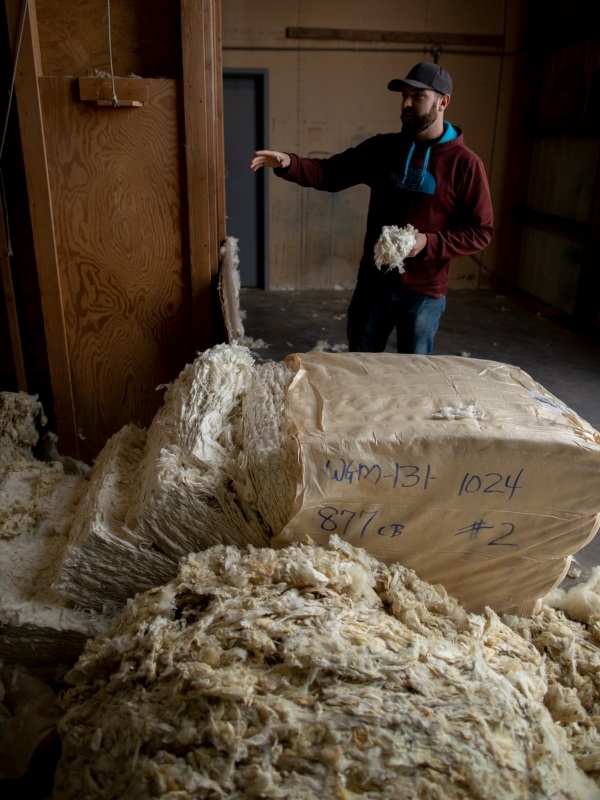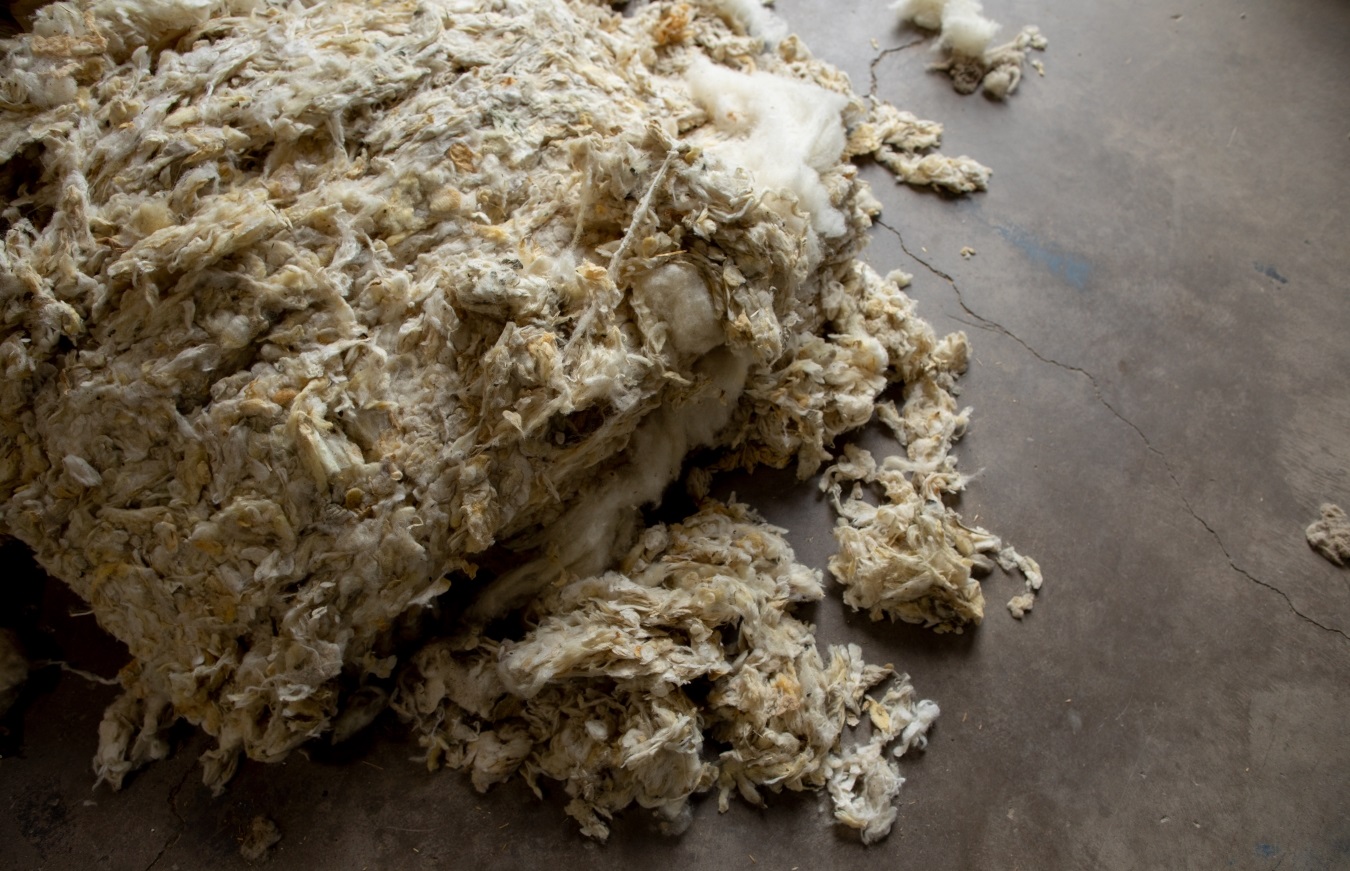Our trademarked Eco Wool® comprises much of the same steps as our GOTS Organic Wool with local, family-run farms. What makes our wool EcoWool®? We have worked with our primary wool providers to develop an evolving set of guidelines for EcoWool® producers. The following guidelines encourage growers to produce higher quality wool that is grown in a thoughtful, sustainable manner. We also carefully choose and blend specific types of wool to make our batting exceptionally soft and resilient.


Our Wool Growing Criteria
- Proper Grazing Methods: Our growers rotate sheep to different pastures to allow vegetation to recover from grazing. Our wool also comes from farms that do not overstock their pastures. Overstocking and infrequent rotation produces soil erosion, higher amounts of invasive plants, and the need to bring in outside feed. Proper grazing techniques reduce soil erosion, create higher quality wool, and reduce the risk of sheep acquiring internal parasites.
- Predator-Friendly: We encourage our growers to use trained sheep guardian dogs (rather than trapping, poisoning, or shooting) and the inclusion of other larger animals (such as llamas) to protect their flocks from predators. Predators play an important role in maintaining healthy ecosystems.
- Healthy Veterinary Practices: Only certain kinds of medications and supplements can be used to treat Eco-sheep. We encourage alternative caring methods to keep sheep healthy with fewer chemicals. Generally, sheep raised in open pastures are healthier and require less veterinary care.
- Chemical Control: We oppose the use of herbicides and pesticides on fields where sheep will be grazing. We are able to determine if wool has been in contact with harmful chemicals through random spot-testing.
- Specifications for Breed, Color, Strength, and Micron-Width: Our wool blends use wool from six to eight different breeds of sheep. Our blends are chosen to create strong, durable wool batting that retains its loft and resiliency longer. We use a mix of coarse and finer wools with varying crimps to achieve our special batting.
- Skirting: Skirting is the process of removing less desirable wool from the belly and rear of the sheep. This wool is separated on a skirting table and sold to other clients. Our wool is skirted at the time of shearing and checked again at the washing facility.
Practices We Oppose
- Carbonizing: Wool fibers are dipped in strong acids to dissolve residual vegetable matter.
- Chemical Crimping: After carbonizing, wool fibers are unnaturally straightened and require a chemical “perm” to regain their coiled, crimped structure.
- Dipping: At many farms all sheep are subject to a bath in a pesticide solution. We recommend a more holistic approach.
- Bleaching: In order to get the purest whites and brightest colors, most wool fibers are bleached and dyed. Our batting is the color of natural white wool.
- Harmful Shearing: We work with highly skilled shearing crews to make this process as quick and harmless as possible.
- Mulesing: Cutting patches of skin off sheep (to discourage infection and flies from laying eggs in the folds) is used primarily with Australian Merino sheep. None of our growers practice this method.
- Overgrazing: In addition to harming the land, overgrazing lowers overall wool quality. More invasive plants begin to grow and can increase the amount of vegetable matter in the wool. More vegetable matter often makes carbonizing necessary.
